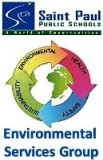Water Win for St. Paul Public Schools
- brownmillercomm
- Apr 3, 2017
- 2 min read
We all want to live in #HealthyCommunities and access to safe drinking water is a huge part of that. Here's how one school district ensured students and staff are getting safe water.
In 2016, the St. Paul School District in Minnesota set out to ensure that all students and staff had access to safe drinking water. Between April and August 2016, they tested more than 6,500 samples from across the district’s 72 buildings for lead and copper, collecting samples from every tap from which students or staff might drink water, and all food prep taps.
Testing showed that the vast majority of taps (96.5%) were below the lead action level specified by the EPA and the Minnesota Department of Health. Of the 3.5% that tested above the action level in the first draw sample, only 13 taps tested high for lead after 15 seconds of flushing. The district’s facilities department immediately shut off all taps that tested above the action level in either test and worked quickly to remediate those fixtures, completing all work by early November 2016.
They also installed water bottle filling stations in many of their schools’ cafeterias; and in bigger schools they installed additional bottle fillers in high-traffic areas. More than 55 bottle fillers have been installed to date, and the district hopes to add more soon. Beyond working to improve access, the district is also promoting drinking water via signage and nutrition education.
St. Paul Public Schools went above and beyond state recommendations (to test 20% of taps), testing 100% of drinking water sources in the district and then working quickly to remediate sources of lead in drinking water. Ensuring that all water in your school district is safe and improving student access to drinking water is key in making water first for thirst.
Click to learn more about the Lead in Water Program in Saint Paul Public Schools.

















































